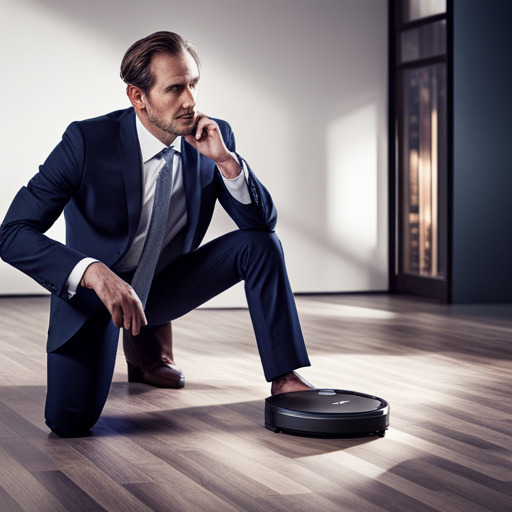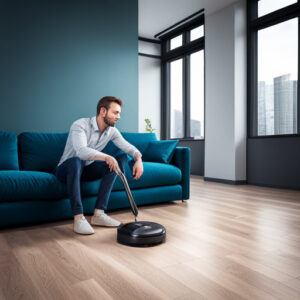Are you considering getting a robot vacuum but wondering whether it has the same components as a traditional vacuum? Perhaps you’re curious about how robot vacuums work and whether they are equipped with the same features as regular vacuums. In this blog post, we will delve into the intriguing world of robot vacuums and explore the presence of beater bars in these innovative cleaning devices.
We’ll start by understanding what beater bars are and their function in traditional vacuums. Then, we’ll investigate whether robot vacuums incorporate beater bars in their design and the implications of this feature, if present. Additionally, we’ll discuss the impact of beater bars on different types of flooring and the effectiveness of robot vacuums in comparison to traditional models. By the end of this post, you’ll have a comprehensive understanding of the role of beater bars in robot vacuums and how they contribute to efficient cleaning in your home. So, let’s unravel the mystery of beater bars and their relevance in the realm of robot vacuums!
How Do Beater Bars Work in Robot Vacuums?
When considering robot vacuums, one may wonder if they are equipped with beater bars. Beater bars are common components in traditional vacuums, but their presence in robot vacuums is not as straightforward. Understanding the role of beater bars in robot vacuums is crucial for assessing their effectiveness on different types of flooring.
Robot vacuums are designed to navigate and clean floors autonomously, but the inclusion of beater bars in these devices can impact their cleaning capabilities. It’s essential to delve into the function of beater bars in traditional vacuums to grasp their potential role in robot vacuums. So, do robot vacuums incorporate beater bars, and if so, how do they work within these autonomous cleaning machines?

Benefits of Beater Bars in Robot Vacuums
Beater bars in robot vacuums are designed to agitate carpet fibers, dislodging dirt and debris for more effective cleaning. This can be especially beneficial in homes with pets or high-traffic areas, where dirt and pet hair can become deeply embedded in carpets.
The rotating brush of the beater bar helps to lift and loosen dirt, allowing the vacuum’s suction to remove it more effectively. As a result, robot vacuums with beater bars can provide a deeper clean, leaving carpets looking and feeling fresher.
Potential Issues with Beater Bars in Robot Vacuums
Beater bars, while effective at agitating carpet fibers, can sometimes cause damage to delicate flooring such as hardwood or laminate. The rotating brush can scatter debris rather than picking it up, potentially leading to a less effective cleaning performance.
Additionally, beater bars may require more maintenance compared to robot vacuums without this feature, as they can become tangled with hair, threads, or other debris. This can lead to reduced suction power and overall performance if not regularly cleaned and maintained.
Are Beater Bars Necessary for Effective Cleaning?
Beater bars, also known as brush bars or agitator bars, are common components in traditional upright vacuums. They feature a rotating brush that helps to dislodge dirt and debris from carpets and rugs, allowing the vacuum to pick up more dirt. But are they necessary for effective cleaning in robot vacuums? Let’s explore this question further.
Robot vacuums have become increasingly popular for their convenience and autonomous cleaning capabilities. Many modern robot vacuums are equipped with a range of cleaning technologies, including powerful suction, brushes, and advanced navigation systems. However, not all robot vacuums are fitted with beater bars.
So, do robot vacuums really need beater bars to achieve effective cleaning results? This is a common question among consumers considering a robot vacuum purchase. The answer depends on the types of flooring in your home and your specific cleaning needs. In the following sections, we’ll delve into the role of beater bars in robot vacuums, their benefits, and potential issues to help you make an informed decision about their necessity for effective cleaning.
Understanding the Impact of Beater Bars on Different Floor Types
Beater bars can have different effects on various floor types. On carpets, the rotating brush of the beater bar can effectively agitate the carpet fibers, dislodging embedded dirt and debris. This agitation can help to lift and remove dirt and pet hair that may be trapped in the carpet.
However, on hard floors such as hardwood or tile, the beater bar’s bristles may scatter debris rather than effectively picking it up. The rotating motion of the beater bar can cause dirt and small particles to be pushed around rather than collected.
The Bottom Line: Choosing the Right Robot Vacuum for Your Needs
When it comes to choosing the right robot vacuum for your needs, understanding the role of beater bars is crucial. Consider the type of flooring in your home and how the beater bars may impact its cleanliness.
For carpets and rugs, a robot vacuum with beater bars can provide a more thorough clean by agitating the fibers and dislodging debris. However, on hard floors, beater bars may not be necessary and can potentially cause damage.
It’s important to weigh the benefits of beater bars against the potential issues they may present based on your specific cleaning needs. Ultimately, the right robot vacuum for you will depend on the flooring surfaces in your home and your preferences for cleaning efficiency.

